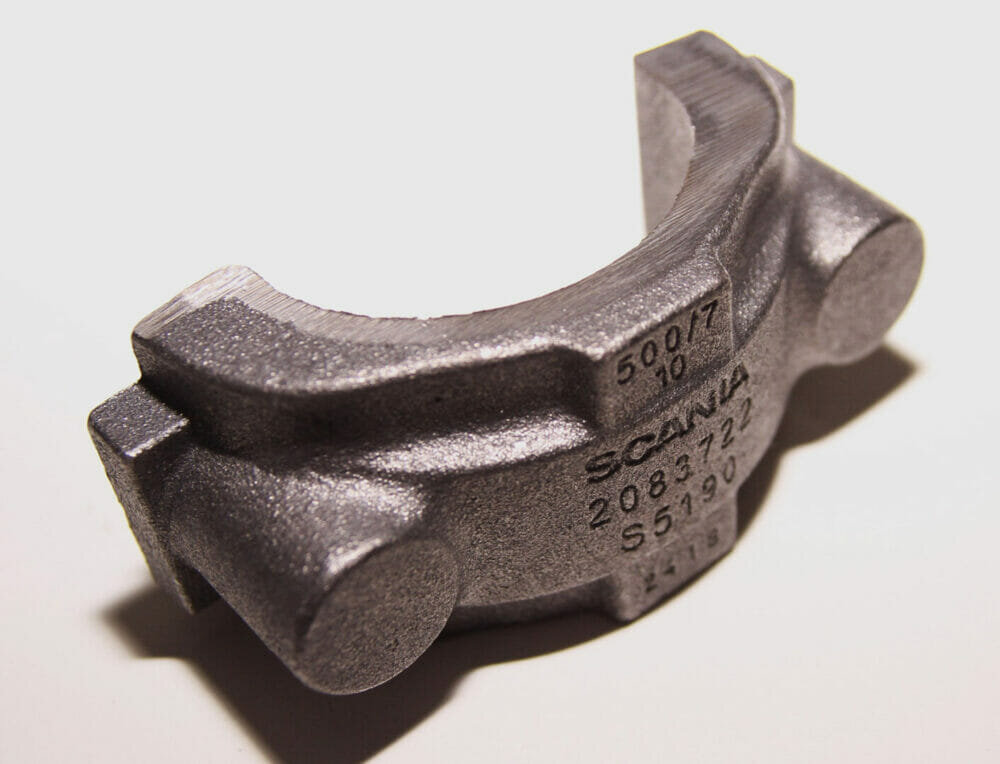Engineering designers are being urged to take advantage of a new guide that highlights the vast potential and environmental sustainability of the ‘original composite material’.
The rallying cry has been made by the Cast Metals Federation (CMF) as it looks to educate and persuade more professionals in industry to consider the huge range of mechanical properties of cast irons when they are designing new products.
‘Cast Irons – Part 1: Materials and Properties for Design’, which has been published by ISO (the International Standards Organisation) as a Technical Report (ISO/TR 10809-1:2023), provides a comprehensive yet accessible overview of design considerations, and clearly explains the potential of this hugely versatile family of metals.

The newly updated technical report includes tables to assist the designer to firstly select the right type of cast iron and then choose the right grade, depending upon the component criteria required.
There is also information about typical compositions, mechanical properties, and section sensitivity aspects (needed because of the effect of variations in cooling rates due to section thickness) with useful tables, images, and diagrams.
It is hoped that this influential guide will act as a bible for key design considerations, principles, limitations, and opportunities associated with the use of cast irons.
Pam Murrell FICME, Chief Executive Officer of the Cast Metals Federation and Chair of ISO TC 25 (under which committee this work was organised), explained: “The metallurgical aspects of cast irons are often not well understood and cast iron is, after all, the original composite material.
“So, whilst this revised guide is not a textbook of cast iron metallurgy, I am confident that designers and engineers will find it enormously helpful in discussions with their cast component suppliers, whilst materials scientists and students of ferrous metallurgy should also find it hugely informative.
“We want people designing the next generation of products and applications to do so by making informed material choices and then hopefully they can leverage the huge versatility and power of cast irons.”

The family of cast irons offers a huge range of mechanical properties to the engineering designer, yet many are unaware of the full range of iron grades available to them and the opportunities they provide in terms of castability and applicability.
And of course, in most modern economies, cast irons are readily produced using recycled metal (using steel scrap or cast-iron parts at end of life) making them ideal for companies looking to reduce the carbon footprint of their supply chain.
Pam continued: “When most people say cast iron, more often than not they mean grey cast iron, which is a relatively low cost and easily castable material, but with excellent machineability and good vibration damping and heat transfer properties – this makes it highly versatile. However, to take this approach is ignoring the wider family of cast irons.
“They believe cast iron is a material that does not offer much in terms of strength and ductility – but to only consider grey cast irons is to ignore all the other types of cast iron that are available, many of which do offer ductility, wear resistance and corrosion resistance, as well as strength and castability.”
She went on to add: “In fact, the global tonnage of cast iron components was around 74Mt in 2021(2) with parts for a huge range of applications, including machine tools, mining and agriculture, automotive, rail and freight transport. All of this demonstrates the huge range of current uses for the full family of cast irons.”
The ‘Cast Irons – Part 1: Materials and Properties for Design’ ISO Technical Report sits alongside an accompanying technical report on the welding of cast irons (ISO/TR 10809-2:2011 Cast irons. Welding).
Many experts have contributed to the publication, including Richard Larker and Kathy Hayrynen, who led the ISO working group.
To purchase a copy of the technical report, please contact the CMF, or visit the https://knowledge.bsigroup.com/ and search for the report.
References
1. BSi Knowledge: https://knowledge.bsigroup.com/products/cast-irons-materials-and-properties-for-design-1/standard – accessed 31st March 2023.
2. Census of Global Castings Production, Modern Castings, pp 26. Pub AFS, Dec 2021.








